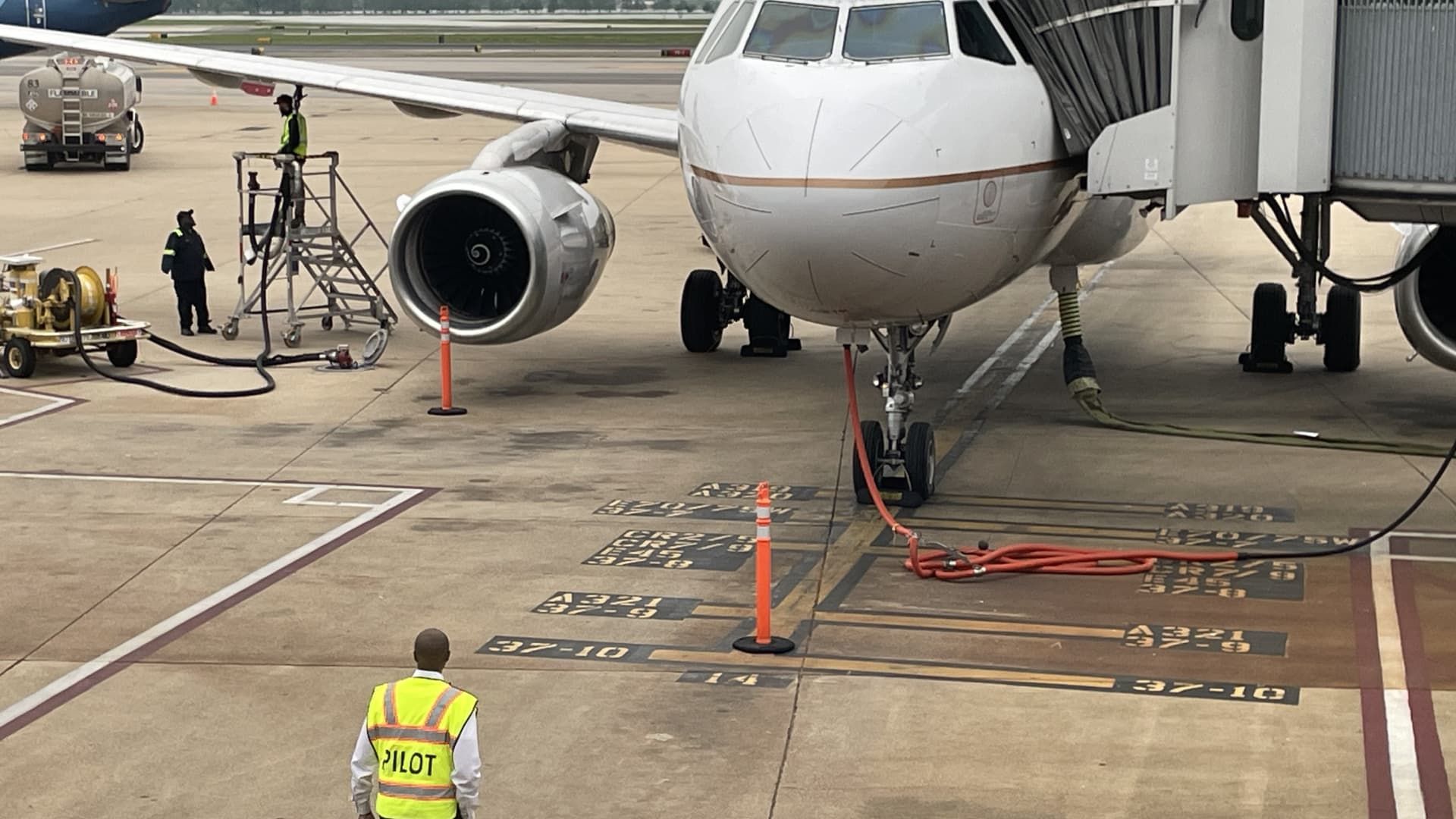A pilot does a walk-through before a United Airlines flight
Leslie Josephs/CNBC
U.S. passenger airlines have added nearly 194,000 jobs since 2021 as companies went on a hiring spree after spending months in a pandemic crisis, according to the U.S. Department of Transportation. Now, the industry is cooling its hiring.
Airlines are close to meeting their staffing needs, but the slowdown is also partly due to the fact that they face a number of challenges.
A glut of flights in the United States has driven down fares and reduced airline profits. Demand growth has slowed. Planes are arriving late. Boeing and Airbus, prompting airlines to rethink their expansions. Engines are in short supply. Some airlines are postponing plane deliveries altogether. And labor costs have risen after groups like pilots and mechanics signed new contracts with big raises, their first in years.
The annual salary for a three-year first officer on midsize crews at U.S. airlines averaged $170,586 in March, up from $135,896 in 2019, according to Kit Darby, an aviation consultant who specializes in pilot salaries.
Since 2019, U.S. airline costs have risen by double-digit percentages. Excluding fuel expenses and net interest, they will rise by about 20%. American Airlines This year and around 28% more in both united airlines and Delta Air Lines as of 2019, according to Savanthi Syth, an airline analyst at Raymond James.
It is more pronounced in low-cost airlines. Southwest Airlines' costs will likely rise by 32%, JetBlue Airlines' rose almost 35% and Spirit Airlines will experience an increase of almost 39% over the same period, estimated Syth, whose data is adjusted for flight duration.
Facilitate hiring
Friday's U.S. jobs report showed air transport employment in August was roughly in line with July.
But there have been setbacks. In the most serious case, Spirit Airlines temporarily suspended 186 pilots this month, its union said Sunday, as the airline's losses have mounted in the wake of a failed acquisition by JetBlue Airways, a Pratt and Whitney The engine recall and an oversupplied US market. Last year, even before the merger failed, it offered severance pay to employees.
Other airlines are making hiring easier or finding other ways to cut costs.
Frontier Airlines The airline is still hiring pilots but said it will offer voluntary furloughs in September and October, when demand typically dips after the summer holidays but before Thanksgiving and the winter holidays. An airline spokeswoman said it offers such furloughs “periodically” for “when our staffing levels exceed our planned flight schedules.”
Southwest Airlines expects to end the year with 2,000 fewer employees compared with 2023 and earlier this year said it would pause hiring classes for job groups that include pilots and flight attendants. Chief Financial Officer Tammy Romo said on an earnings call in July that the company’s headcount would likely decline again in 2025 as attrition levels exceed the Dallas-based carrier’s “controlled hiring levels.”
united airlinesBoeing, which suspended pilot hiring in May and June because of delayed arrivals of Boeing planes, said it plans to add 10,000 people this year, up from 15,000 in 2022 and 2023. It plans to hire 1,600 pilots, up from more than 2,300 last year.
This is a change from previous years, when airlines were unable to hire employees quickly enough. U.S. airlines typically hire pilots on a regular basis, since federal law requires them to retire at age 65.
Airlines laid off tens of thousands of employees in 2020 as they tried to stem record losses. More than $50 billion in aid packages passed to help the industry weather its worst crisis in history prohibited layoffs, but many employees accepted airlines’ repeated offers of severance pay and voluntary leave.
Travel demand then rebounded faster than expected and surged into 2022, leaving airlines short of experienced employees, such as customer service agents. It also led to the worst pilot shortage in recent history.
In response, companies, especially regional ones, offered large bonuses to attract pilots.
But times have changed. Even air cargo giants were competing for pilots in recent years, but demand has declined as FedEx and Universal Postal Union seeks to reduce costs.
American Airlines Chief Executive Robert Isom said in an investor presentation in March that the airline added about 2,300 pilots last year and expects to hire about 1,300 this year.
“We will continue to hire at levels like that for the foreseeable future,” he said at the time.
Despite the lowered goals, students continue to fill classrooms and cockpits to train and rack up hours to become pilots, said Ken Byrnes, chairman of the flight department at Embry-Riddle Aeronautical University.
“The demand for travel is still there,” he said. “I don't see a slowdown in the long term.”









